
Forlorn and mostly forgotten, tiny Cairo, Illinois, the southernmost city in the state, has taken center stage in Gov. J.B. Pritzker’s campaign to rebuild Illinois infrastructure and revive the economy of the struggling town, once a crossroads for steamboats, ferries and rail.
Never a large city, it has declined from 15,000 people in the 1920s to fewer than 2,000 today. It lacks basic businesses and services. It has no gas station, no hospital and no pharmacy.
Thirty-six percent of its residents live in poverty.
The solution, according to Cairo’s leaders, is construction of a new port along the Mississippi River. Cairo is located at the point where the Mississippi meets the Ohio River.
Pritzker jump-started the project by setting aside $40 million in the Rebuild Illinois capital budget for construction of the port, calling it “one of the largest job creating projects in southern Illinois in a generation.”
The port’s backers include a downstate Republican state senator and a longtime personal friend of the governor’s who did public relations work for him, his charities and his business interests for many years before Pritzker was elected.
The friend, Dave Lundy, owns Aileron Communications, a public relations firm that has been paid $146,880 from a state contract awarded from the $40 million grant. Before that, Lundy worked to promote the port pro bono for years.
The Cairo port development is one of three Rebuild Illinois projects sponsored by the governor, totaling $141 million, which have close ties to his friends or political allies but have also been marked by serious questions or delays, an investigation by the Illinois Answers Project has found.
In another downstate Illinois project, $96 million from Rebuild Illinois is being used to build a light rail link to a regional airport with light commercial traffic. Federal authorities had declined to finance the project for years, questioning its viability, and records provided by the governor’s office show a one-paragraph request from a downstate county board chairman to explain how the project came to the governor’s attention. A former downstate congressman, Jerry Costello, has been a champion of the project and has been paid as a consultant for his work related to it.
On the Near West Side of Chicago, $5 million was earmarked to clean up the site of a private residential and commercial project. The land’s owner, the Illinois Medical District, received the grant but insists it never lobbied for it. The money will benefit the developer of the site, Elzie Higginbottom, who is responsible for the cleanup and has close political ties to the governor.
In all instances, the governor’s office says the grants were awarded based on the merits of the project.
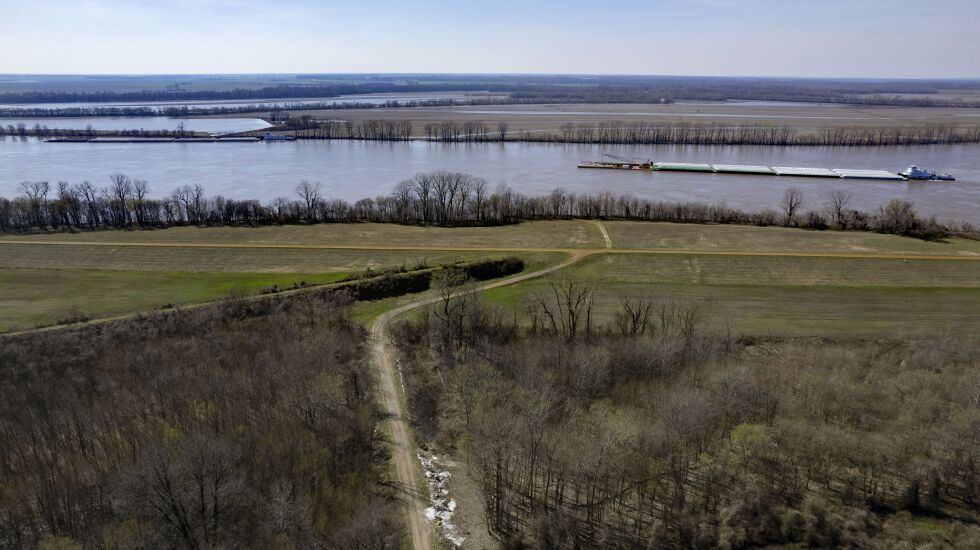
Not shovel ready
When Pritzker approved the earmark for the Cairo port, it was far from shovel ready.
Even today, after $2.8 million of the grant has been spent, the project has stalled. Work stopped June 30 amid state officials raising questions about how bond proceeds were being spent. Officials wanted a tighter rein on which costs could be paid out of Rebuild Illinois bond proceeds before funding the next $7.5 million the port requested.
In late August, Chicago-based Decennial Group, which is leading a consortium of potential investors, wrote the governor “deeply concerned” about the project’s “overall feasibility” because of the delays. Decennial, which has pledged to raise $200 million in private funds for the port, urged the governor to take a series of actions to get the project back on track.
The Decennial letter warns that further delay could mean Cairo would lose out to competing port projects in neighboring states.
Pritzker had shown intense interest in Cairo and the port, traveling there twice to draw attention to what he called “a key priority of my administration,” first when he announced the project in 2020, and again in 2021 for a ceremony announcing the signing of a port agreement with organized labor.
It was one of two infrastructure projects he singled out in his 2021 State of the State and budget message.
Port backers have great ambitions for the project. They foresee a day when up to 150 container ships and hundreds of barges would dock each year, carrying freight to be transported cross-country by rail and trucks.
Backers say construction alone will generate almost 700 jobs, $28 million in wages and millions of dollars more in economic activity.
A project long in the making
Plans for building a Cairo Port date back to 2010, when the General Assembly passed legislation authorizing a port district. That body was largely dormant until 2017. That’s when, at the urging of state Sen. Dale Fowler, a Republican from downstate Harrisburg, then-Gov. Bruce Rauner filled four remaining vacancies on the port district board.
One early proponent of the port was the Cairo Public Utility Co., known as CPUC, which supplies, but does not generate, electricity for Cairo and nearby towns. The one-time chair of the port district board, Larry Klein, has worn multiple hats, including president of the utility board of directors and, at one point, its general manager.
Early on, CPUC provided seed money for port planning.
The state first got involved during Rauner’s administration, with a $1 million grant from the Illinois Department of Commerce and Economic Opportunity.
Port officials first approached Pritzker during his 2018 gubernatorial campaign and again shortly after his victory over Rauner.
Fowler met with Pritzker in early February 2019 and sent the governor’s office a proposed $75 million budget for the port in April.
Records show that on May 15, 2019, Fowler, Lundy and other port advocates met with the governor’s senior staff to pitch the port project.
But Pritzker’s original Rebuild Illinois plan, signed into law that June, did not direct funds specifically for the Cairo port.
Instead, the legislation provided $150 million for port improvements based on competitive applications from the state’s 19 port districts. It was the first time a state capital bill invested in waterways, according to the Pritzker administration.
In October of 2019, Fowler sent a memo to the governor, making the case that the port needed its own dedicated money because it was unable to compete for them.
Among his reasons: the Cairo port authority did not have a source of matching funds, as required, and is “not a credit worthy entity.”

The governor verbally committed to making the $40 million grant in a meeting that included Fowler and then-Republican Senate leader Bill Brady, according to a joint statement from Fowler and other top port proponents.
The next year, in February, Fowler and Lundy were part of a bipartisan group of port promoters and lobbyists that met in Springfield to continue to pressure Pritzker and his administration on behalf of the port, records show.
Their advocacy paid off. That month, Pritzker released the state capital budget with $40 million carved out for the Cairo Port from the $150 million appropriation for ports. Though short of the $75 million requested, the Pritzker administration believed the federal government could make up the difference.
Other port districts would have to fight over the remaining $110 million.
An official of a coalition representing shippers and other inland waterway businesses says a port located in Cairo is a good idea.
“It would be an important project and would serve a lot of needs. It would inject tremendous economic benefits to the area if they could get the project off the ground and disappointing if they can’t make it work,” said Debra Calhoun, senior vice president of Waterways Council Inc.
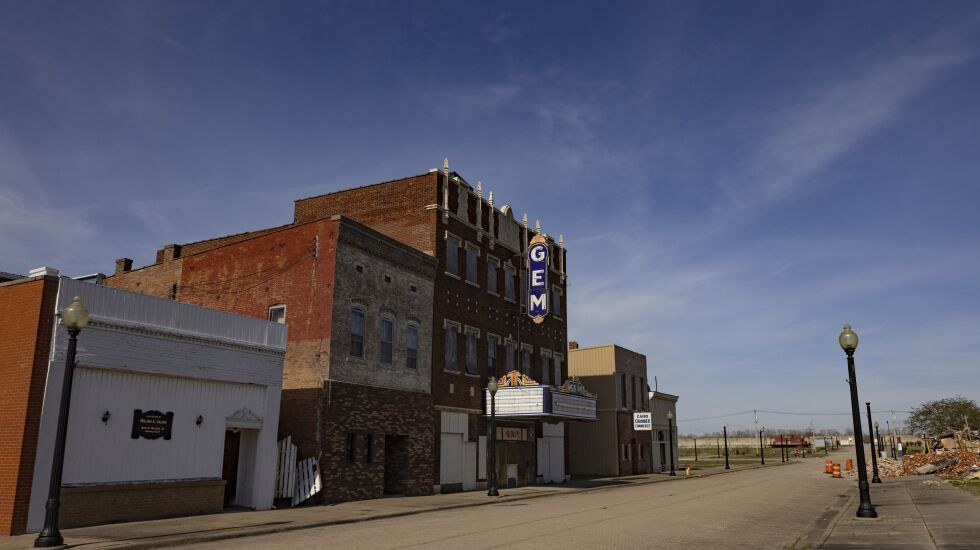
Scrambling to move forward
With state funding paused, Cairo port district backers are scrambling to figure out how to move ahead. A trade publication, The Waterways Journal Weekly, reported details earlier this year on how the project had been held up.
Port backers had requested $7.5 million to advance to the next phase.
But they have hit a serious roadblock. The Illinois Department of Transportation, the state agency in charge of the grants, had found a “deeply concerning” pattern of spending, as more than half the state funds already spent had gone to pay consultants.
IDOT slammed on the brakes, deciding that in the future, state bond funds must cover only engineering, site preparation and environmental work.
In October, Pritzker announced he had released $3.4 million of the port’s request, restricted to IDOT-approved expenses. The governor’s office says the money should start flowing soon.
But they are still short $4 million for the next phase. IDOT has ruled half the expenses ineligible for bond funding and have asked port officials to answer detailed questions to justify the other half, according to state records.
In March of this year, Larry Klein resigned as chairman of the port authority board. He didn’t respond to Illinois Answers Project requests for an explanation, but at a board meeting last year, he expressed his disappointment with the delays.
“The greatest opportunity this community has seen in 50 years is floating by us,” he said, according to board minutes.
The Cairo port district has trouble financing the project because it’s a new initiative in a poor area. It does not levy taxes, despite the legal authority to do so.
Financing the port construction had built-in challenges from the start; work began without funds committed to finish.
Not only did the $40 million grant fall short of the initial projected cost of $75 million, but the latest design is projected to cost $250 to $300 million. The port district plans to raise the additional funds from private investors, rather than request more state funding, according to port planners.
But private financing depends on several complex steps, including obtaining permits from the U.S. Army Corp of Engineers and several state agencies. The port, however, cannot apply for permits until several studies have been completed.
Dampening progress
Another major hang-up is the presence of wetlands in the port construction zone.
As planned, construction on the 350-acre site will fill in 149 acres of wetlands.
When state-backed construction destroys wetlands, Illinois law requires that other wetlands — in some cases much larger — be set aside to compensate for the damage.
In the case of the port, its consultants have determined that 825 acres “of qualified wetlands” must be secured. The Decennial Group has urged the governor to act fast or risk “a complete halt in necessary project permits.”

Illinois lawmakers tried to exempt the port from tougher state requirements and apply the less stringent federal standard, which calls for fewer acres of new wetlands, but the governor vetoed the bill.
The governor’s spokeswoman explained Cairo didn’t need an “environmental disaster” on its hands.
Pritzker’s decision to stick with the tougher state standards may increase the budgeted $4 million wetlands mitigation cost to as much as $15 million and add another year of delay, according to a memo from a law firm to the lead port consultant.
“We are working with the governor’s office on this issue,” say port backers.
The port has no staff, relying on consultants instead. In the early days, port promoters say they worked pro bono. But once state grants were awarded, they were paid from IDOT and Department of Commerce and Economic Opportunity funds.
Chief among the consultants has been Springfield-based consultant Todd Ely, who began working on the project in 2012.
Ely has earned $406,200 from the Rebuild grant and $106,875 from the DCEO grant. He said he is no longer working on the project.
For its public relations work, Lundy’s firm, Aileron, has been paid $146,880 from the Rebuild grant and $19,500 from the DCEO grant awarded under the prior administration. Lundy’s firm was also in line to receive another $200,000 during the next phase of the state grant but that payment is in limbo after state officials raised questions about the money going to consultants on the project.
“My firm and I have been working in support of Cairo, mostly on a pro bono basis, for a decade,” Lundy said. He added he had been working on renewal issues in Cairo such as clearing land of dilapidated buildings, then on developing the port, even before Pritzker was elected. But Lundy said he is no longer working on the port project.
Governor’s friend for 30 years
Lundy and Pritzker have been friends for 30 years, first meeting through an organization the governor co-founded called the Democratic Leadership for the 21st Century. They became business associates in 2000, when Lundy’s PR firm began working for Pritzker’s venture capital firm.
Over a period of 17 years, the PR firm Aileron worked for eight for-profit and nonprofit entities related to Pritzker, according to the firm’s website and other records.
Lundy declined to discuss private client business. But public records disclosed by the Pritzker Family Foundation, set up by the governor and his wife, M.K. Pritzker, list payments to Aileron during four years ranging from 2005 through 2017, adding up to $338,610, for business consulting, public relations and communications.
In addition to public relations, Lundy has had sporadic experience as a lobbyist in Springfield, but after Pritzker took office, he quickly acquired nine lobbying clients, including the port.
In 2019, he told the port district board he would lobby on their behalf, pro bono, port board minutes show.
The governor said in a statement the two friends severed business ties before Pritzker took office. Lundy said he has stopped talking with the governor about Pritzker-related charitable or for-profit business when Pritzker became a candidate in 2017.
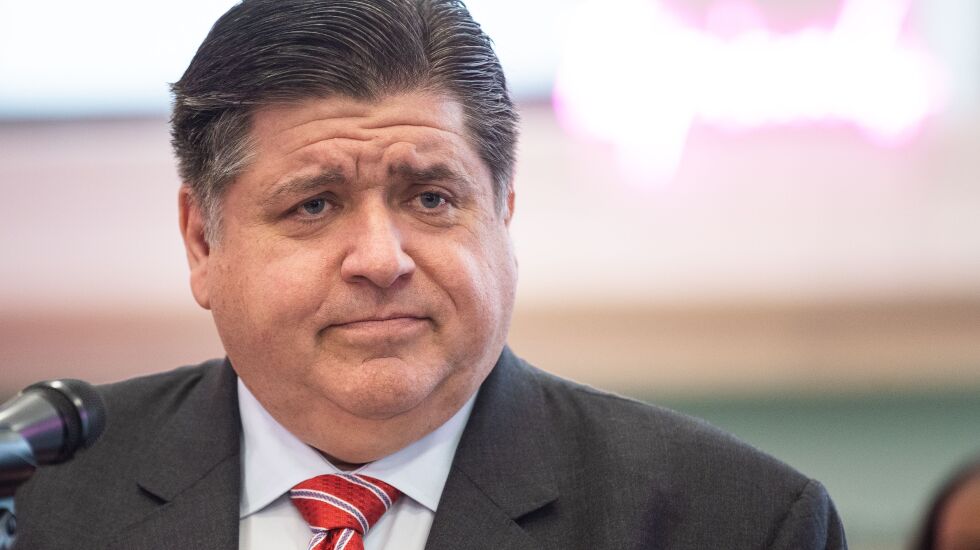
In a statement, a spokesperson for the governor said the two men see each other “only very occasionally and they do not discuss state business.” In addition, “Prior to taking office, the governor informed Dave Lundy that he would not accept any lobbying efforts from Mr. Lundy.”
Lundy may not have lobbied the governor directly, but according to emails obtained through FOIA, Lundy did lobby the Pritzker administration. For example, on May 15, 2019, he sent a packet of information about the port to Pritzker’s staff, the same day he was listed as attending a key meeting to discuss the port with the governor’s staff, records show.
Then, in February 2020, Lundy was a part of a coordinated effort to lobby state legislators and Pritzker’s staff for port funding, public records show.
And in August 2020, Lundy’s public relations firm was paid out of the earlier state grant to handle logistical arrangements for the governor’s announcement — in Cairo — of the $40 million for the port.
No influence
Both Lundy and Pritzker deny that their relationship influenced the governor to make the $40 million grant to the port.
Pritzker said, instead, that he was responding to initiatives proposed by the two state lawmakers, Fowler and Brady.
“The established need of the shipping industry, the desire to secure Illinois’ future as the preeminent transportation hub and the commitment to restore the community of Cairo paved the way for funding of the port project,” said the governor in a statement.
He further defends the investment of state funds in far Southern Illinois, saying the region has been “regularly overlooked by previous governors.”
A $96 million grant surrounded by questions
In a similar vein, Pritzker defends his decision to award a $96 million grant for a 5 1/2-mile passenger train line several miles outside of St. Louis because so little state money has been spent on infrastructure in the area.
Since the late 1990s, local officials have tried to get millions of dollars to extend the MetroLink light rail system from Scott Air Force Base, near Belleville, to MidAmerica St. Louis Airport in Mascoutah, both in St. Clair County Illinois.
Local officials had a plan and the land but not the money to build the new tracks as well as a train station at the airport. The federal government would not pay for it, concerned about a lack of potential riders to and from MidAmerica, at times ridiculed as a “ghost airport.” For most of its 25 years it had few commercial flights.
That changed in recent years, when Allegiant Air began to schedule passenger flights out of MidAmerica, but it is unclear how much passenger rail traffic would be generated.
Local officials have declined to answer questions about the number of riders MetroLink could expect with a commercial airline regularly operating out of MidAmerica.
In 2019, Pritzker put $96 million in his Rebuild Illinois capital plan for the MetroLink extension.
How did the money get there?
State and local officials did not answer detailed questions about the process and provided scant records regarding the origins of the grant. But one political ally of the governor who clearly benefited from the deal is former Congressman Jerry Costello, now a lobbyist and consultant.
On a list of Costello’s accomplishments, the Bi-State Development Agency, which owns and operates MetroLink, pointed to his work “with federal and state officials on the extension of MetroLink to MidAmerica Airport in Illinois. The project was awarded a $96 million grant from the State of Illinois.” Construction is slated to begin later this year.
Bi-State cited Costello’s accomplishments on this and other projects as it renewed his $9,000 per month consulting contract, according to documents prepared for a board meeting in January last year.
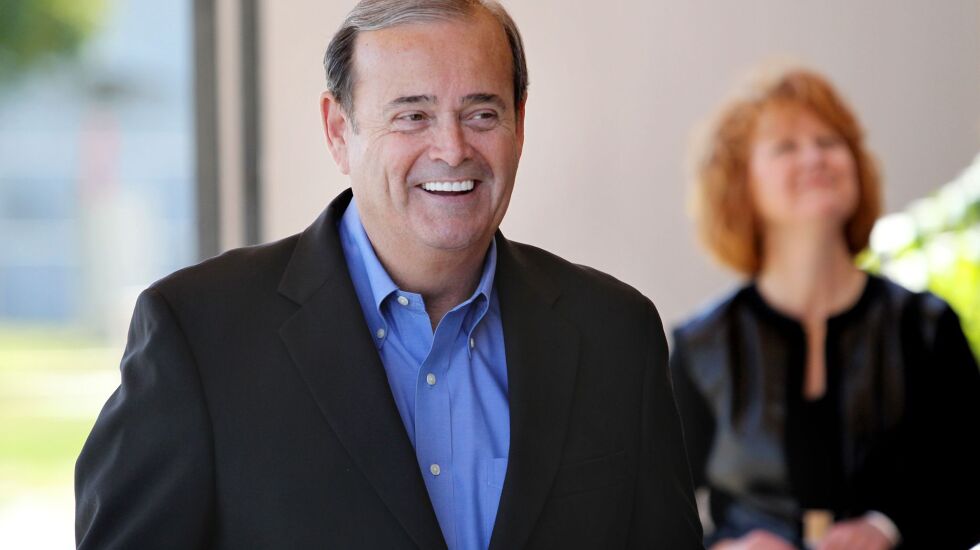
But Pritzker denies that Costello asked for the grant.
“Costello has never discussed MetroLink with the governor,” said Pritzker spokesperson Emily Bittner in an email. “MetroLink was funded based on the merits of the project.”
In October 2017, Costello, who retired from Congress in 2013 but was still a political power in southwestern Illinois, endorsed Pritzker in the primary for the Democratic gubernatorial nomination.
Yet, again, “There is absolutely no connection between the endorsement and the MetroLink grant,” said Bittner.
If not from Costello, how did Pritzker hear of MetroLink’s request?
An email obtained through FOIA sheds some light on the process: MetroLink was one of five St. Clair County projects listed on a “capital bill infrastructure request 2019” presented to Pritzker’s staff by St. Clair County board chairman Mark Kern.
Three local agencies involved in the process, including the St. Clair County Transit District which is building the extension, declined to answer questions about how the grant came about.
Costello didn’t respond to emails requesting an interview, either.
While serving in Congress, Costello advocated for federal spending in southwestern Illinois, successfully helping to secure more than $250 million to expand MetroLink’s light rail system through 20 miles of St. Clair County, connecting residents to Metropolitan St. Louis and its airport.
Costello has also been a steadfast supporter of the two major facilities the newly funded extension will serve: Scott Air Force Base and MidAmerica Airport.
As a 12-term congressman, Costello was known as “the patron saint” of Scott Air Force base, credited with repeatedly helping to save the base from closure. The base is the largest employer in southern Illinois.
Since August 2021, Costello has been paid $220,000 as a federal lobbyist to help St. Clair County protect the interests of Scott Air Force Base in Washington.
He was also a major backer of the $300 million MidAmerica Airport built with federal, state and local funds. The historically money-losing airport is owned by St. Clair County, which Costello once headed.
The year 2022 was MidAmerica’s best, with a record 163,210 travelers departing the airport.
Pritzker’s spokesperson defended the $96 million MetroLink grant as forward-looking.
“Building a new transit mode into an area is very often an impetus for economic development, which is badly needed in Metro East,” Bittner said.
A $5 million state grant benefits a private developer
The Rebuild Illinois legislation includes a $5 million grant that on paper would appear to benefit the Illinois Medical District, a government body that owns and oversees properties on the Near West Side.
But the district says it never asked for the grant to be included in the legislation. Instead, it has been used as a pass-through for a politically active real estate developer and his mixed residential and commercial development on IMD property — 9.5 acres of neglected, contaminated land just southwest of Harrison Street and Damen Avenue.
That real estate developer, Elzie Higginbottom, is the true beneficiary of the grant, which pays for site preparation such as excavation, hauling and soil remediation, plus an outdoor plaza with a $400,000 fountain set amid 23-foot-high illuminated, stainless steel arches.
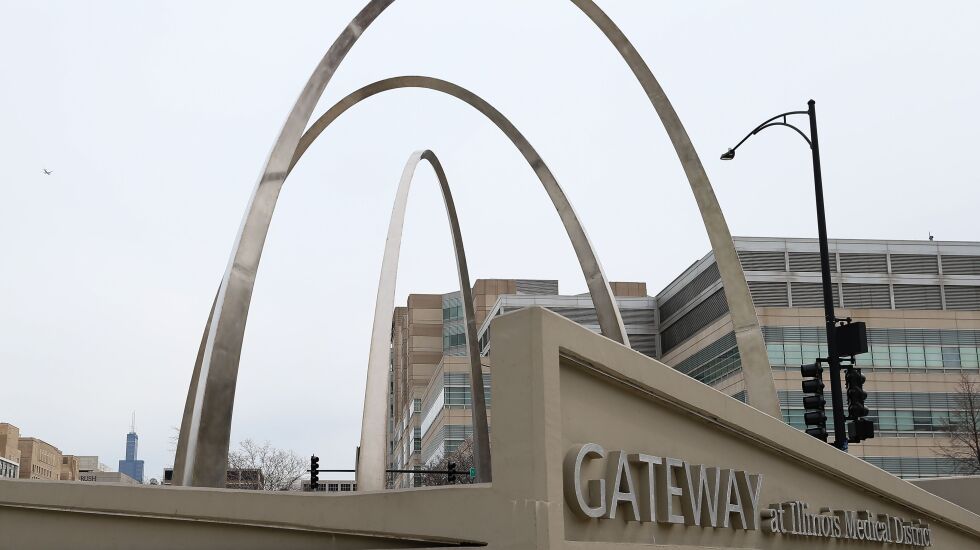
The earmark is the only one in the 362-page legislation that the Illinois Answers Project has identified in Rebuild as benefitting a for-profit development, among the billions of dollars authorized for public works such as roads and bridges.
Higginbottom leases the land from the Medical District under a 75-year ground lease. The grant directly benefits Higginbottom because, according to IMD, the developer is contractually responsible to foot the bill for site preparation.
Higginbottom and his lobbyist said in a joint statement the grant was needed to develop a site filled with “contaminated soil” because IMD had allowed the site “to be used essentially as a dump.”
Higginbottom’s firm, East Lake Management & Development Corp., is the largest African American real estate management and development company in Chicago.
The $5 million grant’s sponsor was Pritzker, not a legislator, according to an Office of Management and Budget spreadsheet obtained under FOIA, which identified the earmark as a “Governor’s Office Addition.”
The funds helped Higginbottom unstick a stalled project.
A political link to the Black community
Higginbottom was credited by Politico with connecting Pritzker to the Black community during the 2018 race for the governor’s office, saying he made introductions for the billionaire gubernatorial candidate.
In December 2018, Pritzker named Higginbottom and his wife, Deborah, to his inaugural committee along with 38 other Illinois movers and shakers.
However, “Mr Higginbottom’s previous relationship with the governor did not play a role in (the) grant process,” a spokesperson for the governor said.

In the spring of 2019, East Lake Management hired John D’Alessandro as a lobbyist. The year before, D’Alessandro worked as a political consultant for the Democratic Governors Association, which supported Pritzker’s election. He also had been a top staffer to former Gov. Pat Quinn, rising to chief operating officer.
After Rebuild’s passage, D’Alessandro put his experience in state bureaucracy to work, taking the initiative to get the grant paperwork going, by contacting high-level officials in the governor’s office, even before the Medical District learned they had the grant in October 2019.
In April 2020, he sent the Medical District CEO a copy of a memorandum of understanding outlining the district’s role: to pass along the $5 million to Higginbottom’s group for the site prep work.
Officials of the Illinois Medical District insist they did not ask for the $5 million grant to be put in the legislation.
A spokesperson for the governor said, in general, it was not unusual for the state to subsidize private development.
“The state’s investment in ensuring the land was appealing to developers is an investment in future economic growth of the area.”
The state has sent to IMD about $4.7 million of the $5 million for site prep, records show.
Higginbottom has started to lease out apartments in the newly built 161-unit building on the site; the next step is building a hotel, scheduled to be completed by the summer of 2023.
Sandy Bergo and Chuck Neubauer are freelance reporters for the Illinois Answers Project, a nonpartisan investigations and solutions journalism news organization.







